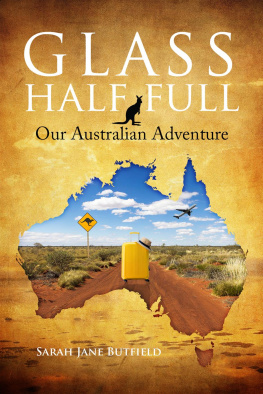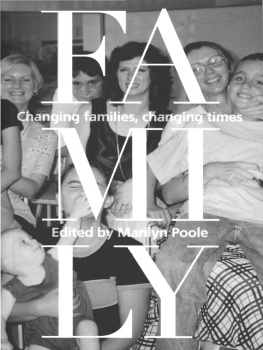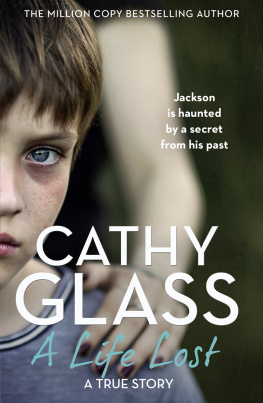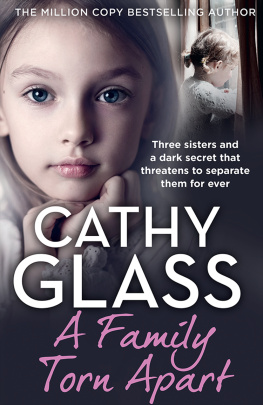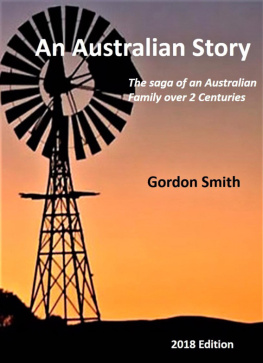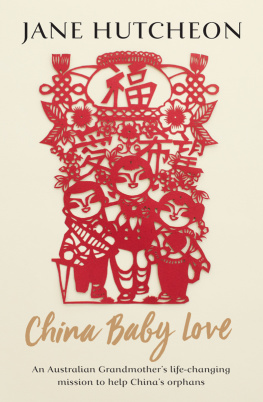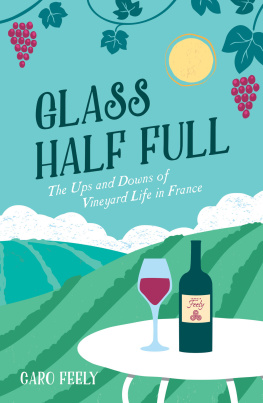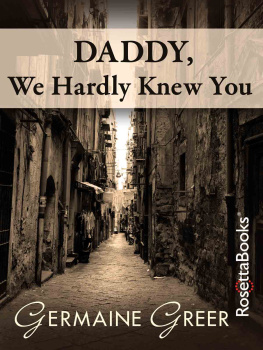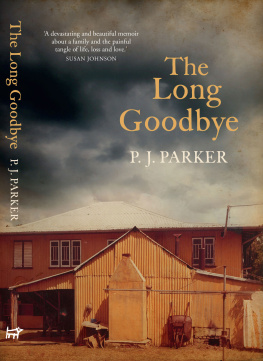Glass Half Full
Our Australian Adventure
By
Sarah Jane Butfield
Book one in Sarah Janes Travel Memoirs Series

S arah Jane and Nigel Butfield in Alice Springs, Australia 2008
Glass Half Full - Dedication
This book is dedicated to Sheila Anne Garratt.

Nigels mother, Sheila, lost her battle with cancer during our time in Australia.
Her memory and spirit lives on in our hopes and dreams for the future.
Copyright
G lass Half Full: Our Australia Adventure
Copyright 2013/2014/2015/2016 Sarah Jane Butfield
Glass Half Full Cover Design 2015 Amygdala Design
Photography by Nigel and John Butfield
First eBook edition November 2013
Second eBook edition October 2014
Boxset Edition January 2016
ISBN: 978-1493773534
The moral right of the author has been asserted. All rights reserved. No part of this book may be reproduced, stored in a retrieval system or transmitted in any form or by any means, electronic, mechanical, photocopying, or otherwise without the written permission of the author and publisher.
The people and events portrayed in this book are as remembered, perceived and/or experienced by Sarah Jane Butfield. However, some of the names and locations have been changed for privacy and legal reasons. The author takes no responsibility for the accuracy of events and dialogue retold to her by third parties, close friends or family.
Acknowledgments
I would not have been able to write this book without the support of my husband, Nigel, who has worked hard to allow me to be a full-time writer. I would like to thank the many friends and relatives who have read the work in progress to assist me with the development and editing. Special thanks to Sandra Kaiser, John Butfield and Julia James for reading the entire book, giving their honest critique and feedback, prior to it entering the editing process.
This second edition of Glass Half Full has undergone a specialist memoir edit by Brenda Donovan. (Editor)
My thanks also go to my children Samantha, Robert, and Jaime, for helping to raise awareness of my book on social media.
Chapter 1 What will the children say?
W hy Australia? Why now? Samantha spluttered, almost choking on her jacket potato and beans, as we announced the topic of that nights family conference.
Thats awesome! said Robert, a keen surfer.
Can we have a kangaroo? said Jaime, eager to show off her knowledge of Australian animals.
This is how it started, our journey, not just the physical one, but also the psychological, social and emotional ones to achieving our dream of a new life in Australia. Our journey would test us in so many ways, and we would have only our positive approach to life to lean on during the toughest times.
Sometimes, enough is enough. In 1997, living or just surviving, I was on the hamster wheel of a life. As a single mum, I juggled a full-time nursing job, with parenting three young children living at home. It was time for something to change. For many years, had behaved like a victim, allowing myself to wallow in self-pity and the why me? syndrome. My glass appeared half-empty, with no refill accessible. The breakdown of my first marriage was to a man eleven years my senior. My second marriage, dubbed The Sham, was to a prolific philanderer. When it ended, a wound was torn in my heart when, despite him refusing to divorce me, the court awarded custody of my beautiful baby daughter Molly to him. I tried to find a sense of family, after my mum died, but this ended in a fruitless search for my biological father. I used the divorces, the custody battle and my mums death as excuses for my tolerance of undeserving people, despite intuitively knowing that my life did not have to be this way. Changes, in whatever form I made them, had to ensure that from then on I would always see my glass as half-full. I decided not to squander my time on undeserving people, or those who did not appreciate the value of life itself. This new positive approach would help me perceive my glass as half-full and achieve a good life for myself and my children.
In 1997, I met Nigel; we live life to the full. We have no children together, but I have four children, Samantha and Robert from my first marriage, and Molly and Jaime from my second. Nigel has three children, Laurence, Phillip and Clair, so together we have made our contribution to the population. Family life for us has always been busy yet fun. At any one time, three or four of the children lived with us, and the others visited on weekends and during the school holidays.

From left to right:
Sarah Jane, Phillip, Jaime, Clair, Robert, Samantha, Sheila and Nigel at the front.
In 2007, two of our children had recently moved out of the family home. Robert, seventeen years old, was living and working on a holiday resort complex in the seaside town of Looe, Cornwall, UK. Samantha, nineteen years old also worked there, and she lived with her partner Doug, in nearby Liskeard. Despite living away from home, they always returned once a week for dinner and they never missed a family conference. We always used family conferences around the dinner table, to discuss important matters like moving house, or changing jobs or schools. On this occasion, we decided that, in addition to the family conferences, we also needed one-to-one talks with each of them. That way they were free to have their say, un-influenced by their siblings. These hard discussions took time and patience, but we are very proud of the mature way in which they listened, questioned, accepted and understood our rationale for moving to Australia. As you can imagine, finding the right time to consider an international move was never going to be easy. In addition, Nigel and I struggled with my problematic ex-husband, Jack, Jaimes biological father, from day one of our relationship, mainly in relation to child custody issues..Hence this would become one of the biggest hurdles to overcome in order to start our new adventure down under.
In February 2007, with only one child, Jaime, living at home permanently, we made our first visit to Australia. We visited Nigels father John, who lives in the state of Tasmania. John emigrated ten years ago to become a caregiver for his widowed mother whose health was deteriorating. At that time, John was divorced from Nigels mother, Sheila, but after ten years apart, they were back in touch and trying to reconcile their relationship. We immediately felt at home in Australia, falling in love with the dream of a more fulfilling life. The substantial career opportunities and a life-changing experience for us all drifted into our viewfinder. There would be increased opportunity for the outdoor activities we love as a family, camping, walking and beach holidays. All we had to decide was, whether it was the right time and the right thing to do, for our family and for us.
Decision made on our part: we wanted to go. During our stay, we visited not only Hobart in Tasmania, but also Sydney in New South Wales and Alice Springs in the Northern Territory. We saw and experienced a cross-section of outback, metropolitan and regional Australia in two states and one territory. February is summertime in Australia. The temperatures and humidity vary considerably from state to state. With temperatures of 20C and changeable in Hobart, 28C and balmy in Sydney, and 40C and arid in Alice Springs we had it all. We realised, soon, after the initial research, that if we wanted to pursue a new life in Australia we would have to apply before my forty-fifth birthday. If not, then we would have no chance of an employer sponsored visa, based on my nursing experience and qualifications. The ideal scenario would be to achieve the move before Jaime started high school. Therefore, we had a quite a small window of opportunity to make our dream a reality. The decision to move to another country is a process. The decision involves not only the formal process, but also the moral and personal decision-making process. This requires the input of the whole family to ensure success. There are no hard-and-fast rules that apply to making the right decision, and there will always be an element of compromise on someones part.
Next page
